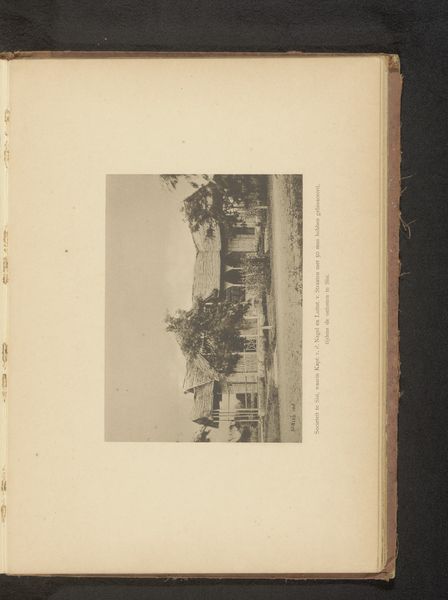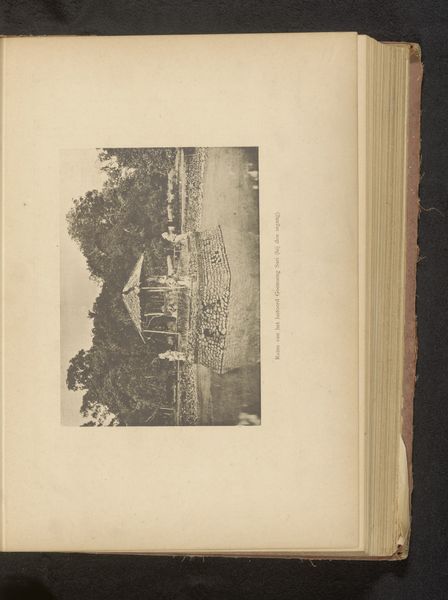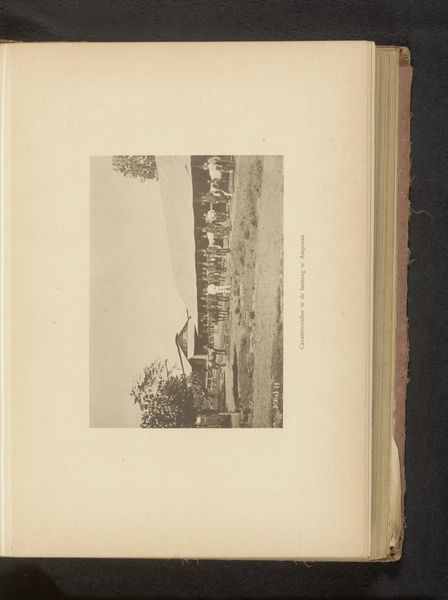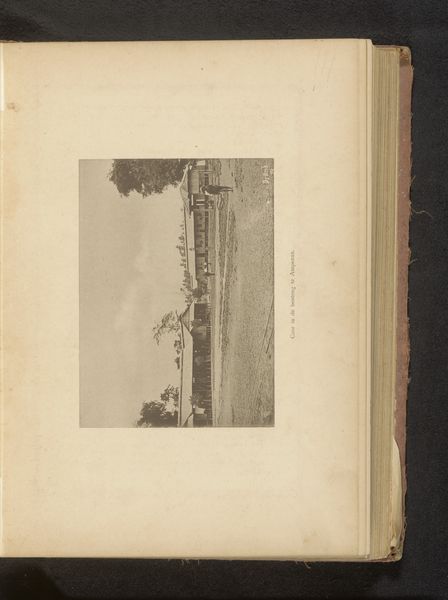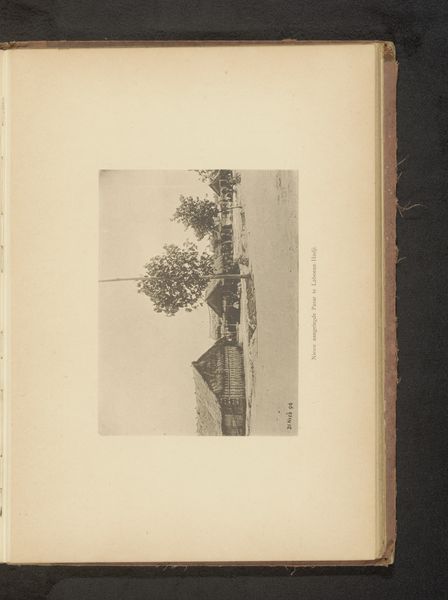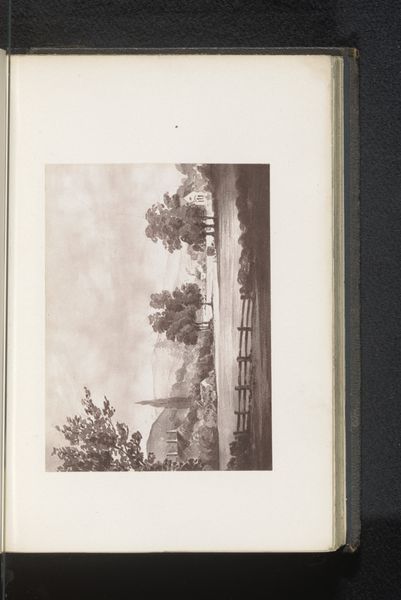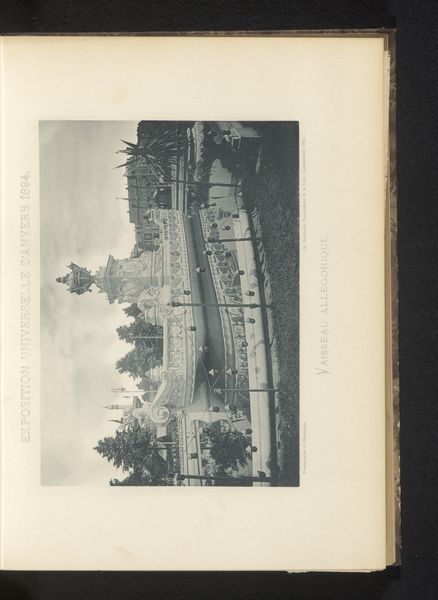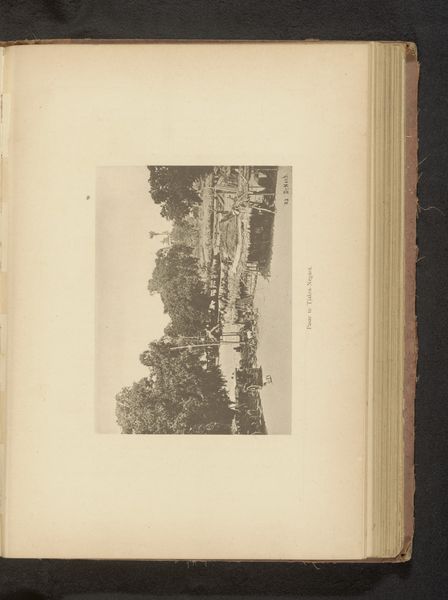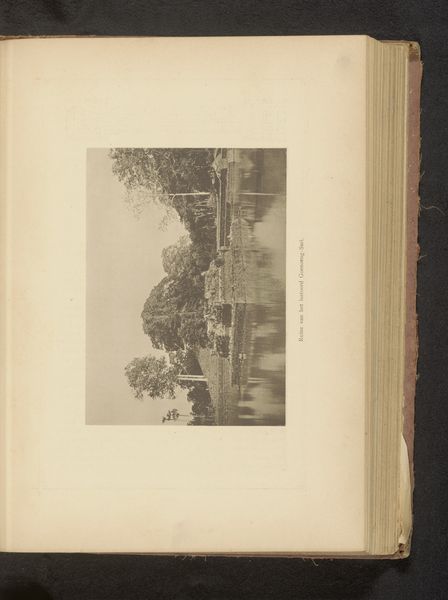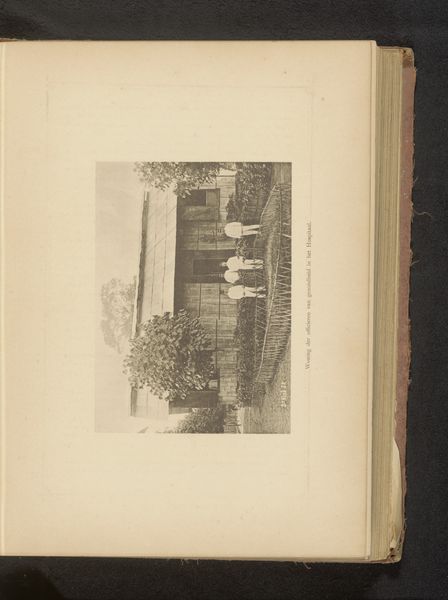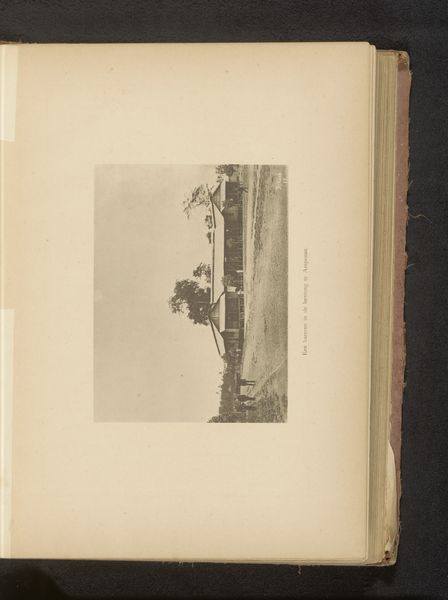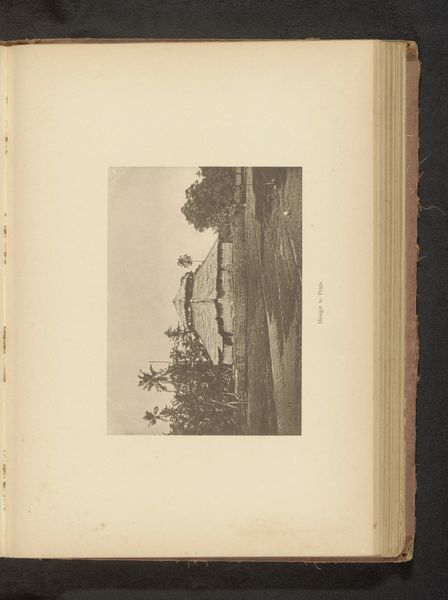
Dimensions: height 119 mm, width 165 mm
Copyright: Rijks Museum: Open Domain
Curator: Here we have an albumen print entitled "Onbekende Europese man voor een woning te Sisi," which translates to "Unknown European Man in Front of a House in Sisi." It's dated to before 1897. Editor: It’s interesting, almost melancholic in its quiet simplicity. The tonal range, typical of albumen prints, contributes to a sense of aged nostalgia. Curator: Indeed. The albumen process, invented in the mid-19th century, involved coating paper with albumen—egg white—and then sensitizing it with silver nitrate. The result is a glossy surface that captures fine details, as you can see in the foliage and the texture of the house. Think of the incredible labor of preparing the paper alone! Editor: Absolutely. And seeing this single figure, likely a colonist, against the backdrop of this simple house speaks volumes about the social landscape of the time. Photography, in its early days, was both a tool for documentation and a medium for shaping perceptions of place and power. Was it an attempt to showcase a cultivated 'home' amidst the perceived wilderness? Curator: Quite possibly. Consider the context: travel and colonialism. Photography democratized the ability to depict, circulate and consume imagery of faraway places, influencing public imagination and perhaps, subtly reinforcing societal structures of the time. How was this particular print used or received, for example? Who would have been its intended audience, and how would they have understood it? Editor: These are questions worth further exploration. It could have functioned as a personal memento, or even a piece intended for wider circulation back home, showcasing an individual’s life within a global narrative. It shows a very different life due to its style: its presentation on toned paper suggests it was kept for posterity within the personal setting. Curator: Its romantic style might have served to legitimize foreign presence, visually establishing dominance. Yet the mundane subject matter creates a bit of contradiction, don't you think? Editor: Precisely. It’s this inherent ambiguity—the interplay between the romantic aesthetic and the underlying themes of occupation—that renders it so compelling, wouldn’t you agree? Curator: Certainly, analyzing both the processes behind the print and the cultural history it embodies provides a multi-faceted understanding. Editor: A poignant snapshot frozen in time. Food for thought on the layers that photography always represents.
Comments
No comments
Be the first to comment and join the conversation on the ultimate creative platform.
